Why Solo: A Star Wars Story Is A Great Star Wars Film
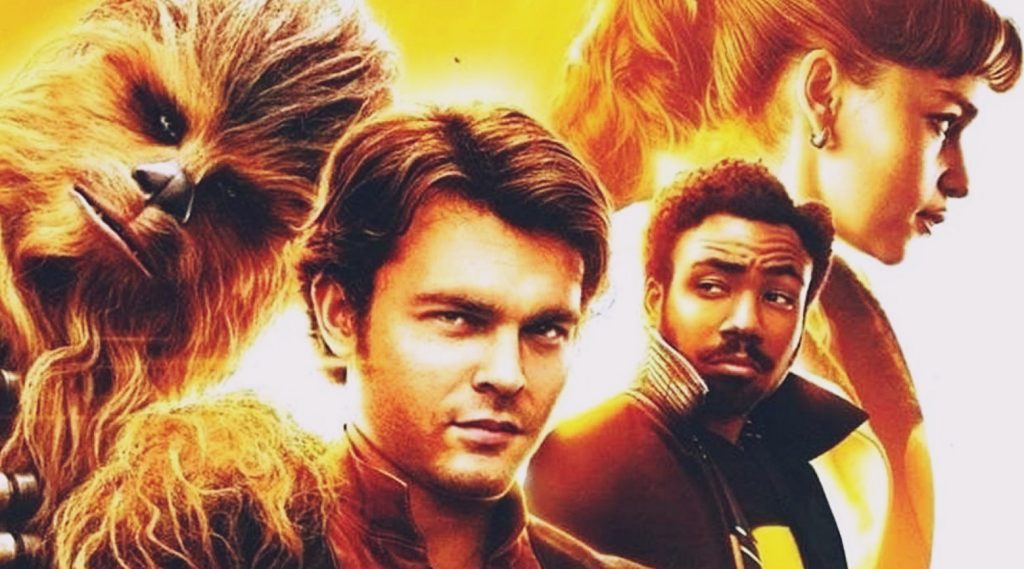
Star Wars is the enduring and popular brand in the world. Since 1977, Star Wars has cemented its role as a film franchise that has connected generations of fans and critics, who have different tastes and sensibilities. Under the reins of creator George Lucas, the brand was evergreen, grossing enormous amounts of money and generally shrugging off any criticisms from film reviewers. Additionally, billions of dollars of toy, clothing, and other merchandise have ensured that franchise is a continuous part of the pop culture lexicon.
Because of the franchises enduring popularity, Disney’s 2012 purchase of Lucasfilm faced a wealth of excitement, criticism, and controversy. These three qualities: excitement, criticism and controversy, can also be seen in the fan and critical reaction to the most recent Star Wars release titled Solo: A Star Wars Story, a film with reviews that ranged from excellent to middling to lukewarm. Released only six months after The Last Jedi, Solo was heavily criticized for everything from its casting (or recasting), marketing, and overall story. The film tanked (by Star Wars standards) at the box office, leaving any chance of a sequel dead in the water. It looks like Han may have flown his first and last solo flight.
Despite the many criticisms leveled against the Solo: A Star Wars Story, there are many things to praise about the beleaguered film including casting, design, and narrative direction. The cast is top notched with multiple Oscar and Emmy nominees involved including excellent performances by Donald Glover and Woody Harrelson. The film is beautifully shot and designed, with incredible set, costume, and character designs. The story and themes of the film are powerful, relevant, and thoughtful (even if they are not developed as fully as one might hope). Most importantly, despite some claims that Solo was a lazy cash grab by some fans and critics, the film abandons crucial elements of the preexisting and well-worn Star Wars mythology like lightsabers, heroic Jedi, and diabolic Sith. The film instead focuses on the seedy criminal underworld that been underused since the first Star Wars film.
Despite its imperfections and its turbulent journey to the screen, Solo: A Star Wars Story is an exciting and worthy addition to the Star Wars universe. This post will address reasons why Solo: A Star Wars Story is a great Star Wars films; a film that has many positive qualities that deserve attention and praise. This will include analysis of various aspects of the film including the overall design of the film, setting and locations, its cast, film inspirations, and themes. Additionally, this article will address several key criticisms of made against film.
“You might want to buckle up baby”
Part I – A Turbulent Journey to Screen
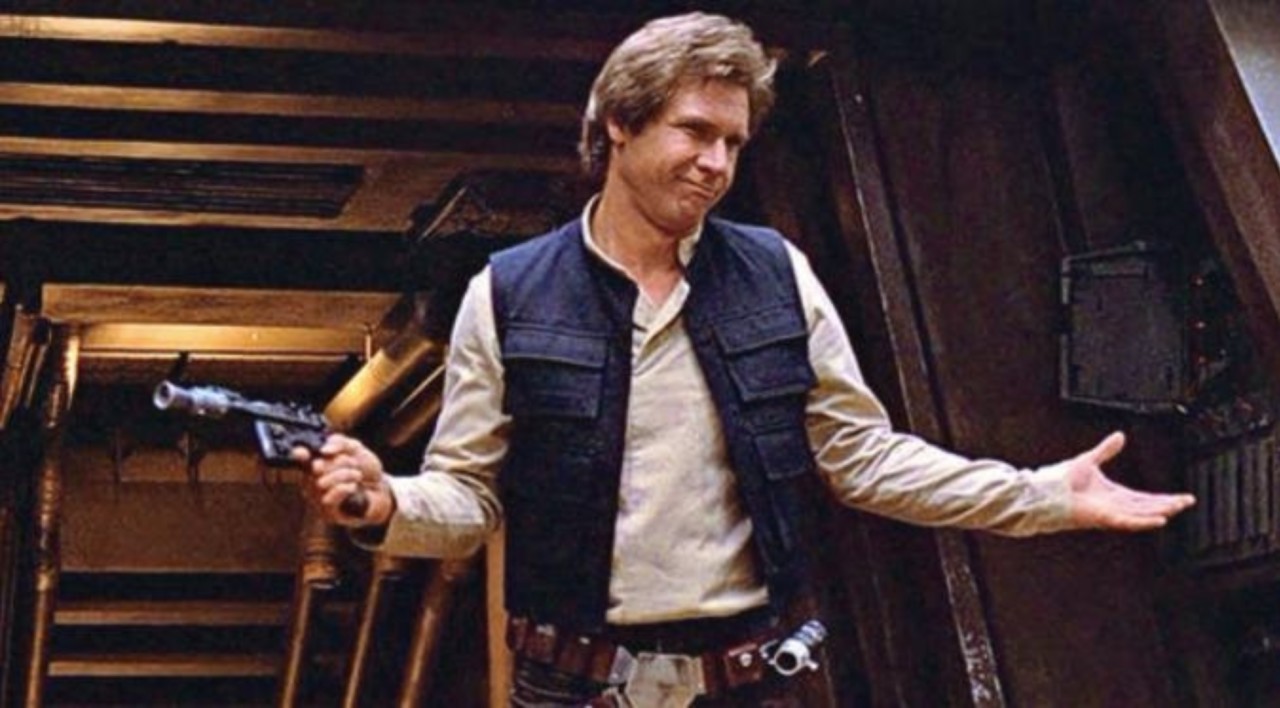
It is impossible to discuss Solo without acknowledging the difficult and turbulent journey that the film has taken to release. When we ignore or put aside the turmoil surrounding production, we lose critical insight into the film itself. It is impossible to separate the film from its troubled production and directorial changes.
A huge shock leveled the Star Wars community when it first came out that directors Phil Lord and Chris Miller (21 Jump Street, The Lego Movie) would be leaving in the midst of the filming process. It is a serious issue when a studio fires a director during filming, especially when much of the film has already been completed. The break allegedly stemmed from “a culture clash from day one” (Hunter). Ron Howard, who heard George Lucas original Star Wars pitch on the set of 1974s’ American Graffiti, was brought in to salvage the film. It made sense to bring in an experienced director like Howard to steer the ship, but the entire issue asks the question as to why Lucasfilm didn’t hire him in the first place, or why Lucasfilm got through the majority of the film making process before recognizing that Lord and Miller weren’t getting the job done.
Howard’s introduction also was a blow to Disney’s massive wallet, as Howard reportedly re-shot much of the film, which took the ultimate costs of filming to about “$250 million to produce and $150 million to promote” (Rubin). This gave the film extreme uphill battle to becoming profitable. What was pitched as one of the more affordable new Star Wars films suddenly became its most expensive to date. The film is set to make about between “approximately $400 million to $450 million in revenue”. Despite this hefty gross, the extremely high cost of filming and enormous advertising budgets for Solo will result in the film being considered a financial failure for the studios involved.
There are several reasons for this relatively low gross of the film in comparison to other Star Wars films. First, Solo opened in a highly competitive box office season, with Avengers: Infinity War and Deadpool 2 opening the previous two weeks. Both super hero films had been building hype with advertising campaigns that had been going on for months. In contrast, Solo started its advertising campaign extremely late, with the first trailer appearing February ahead of a May release, a comparatively short advertising/promotional campaign for big budget blockbusters. All of these factors helped contribute to a below average take for the film, which have seemed to doom any chances of a sequel, despite clear hints about the direction of a possible sequel.
Part II – Looking At The Finished Product
Setting and Time Period
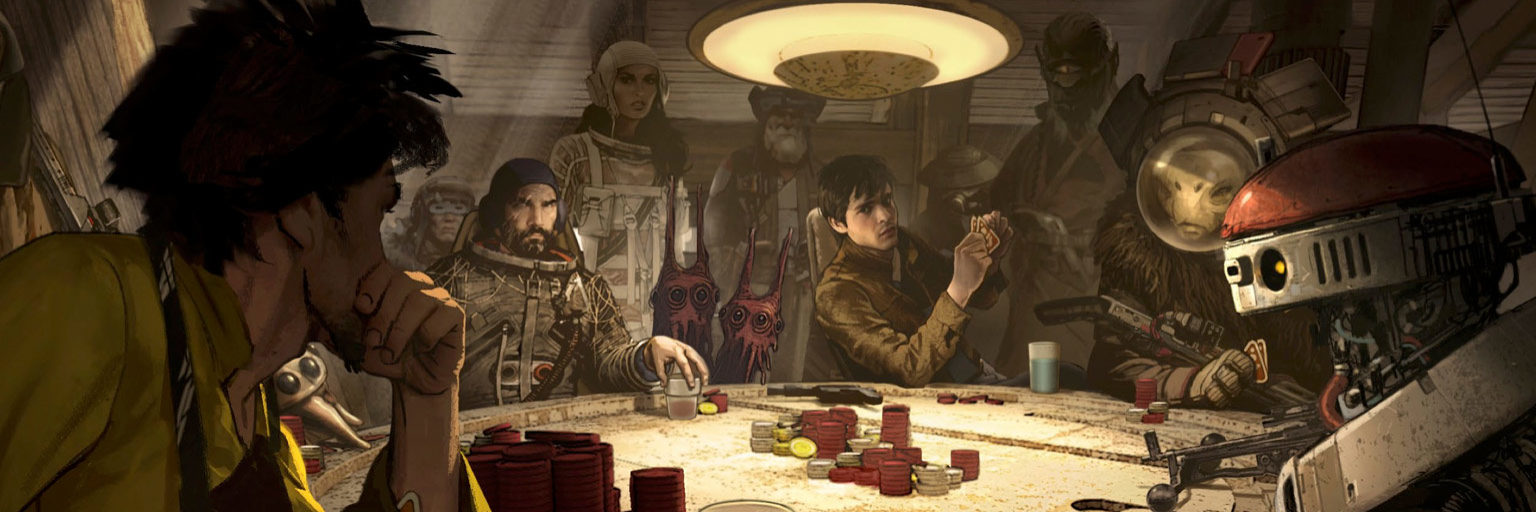
Solo’s time period is one of its most intriguing and important aspects of the film. Set in between Revenge of the Sith and the original Star Wars (A New Hope), Solo is the first film to truly explore this time period (Rogue One leads right into A New Hope, so the film doesn’t really explore that gap between Episode III and IV). Because of the canon reset in 2012 (all material besides the six films and The Clone Wars have been relegated to being separate “Legends” content), this time period is wide open. Writers have the ability to create new narratives or to change previous stories to better fit their story telling needs. This makes the gap time period a perfect time period to set a new original stand alone adventure like Solo.
One criticism of Rogue One is that it was forced to conform closely to the events of A New Hope and ultimately some fans and critics felt the direct lead-in to A New Hope felt forced. Forbes.com‘s Erik Kain asserted that “yet another plot focused on the Death Star felt uninspiring, especially when there’s a whole galaxy of other stuff to be explored” (Kain). Likewise, the lightsabers, Jedi, and Sith that have come to define Star Wars as an iconography are only obliquely seen in Solo: A Star Wars Story. This is crucial as Solo stands as a film that is on the border of “familiar, well-known territory and a brave new world, as the first film in the franchise not to feature any members of the Skywalker family” (Wardlow). This different scope and scale in Solo required a different approach to characters, locations, and themes, opening the film to exciting and unexplored narrative possibility.
The Criminal Underworld – Back and Bigger than Ever
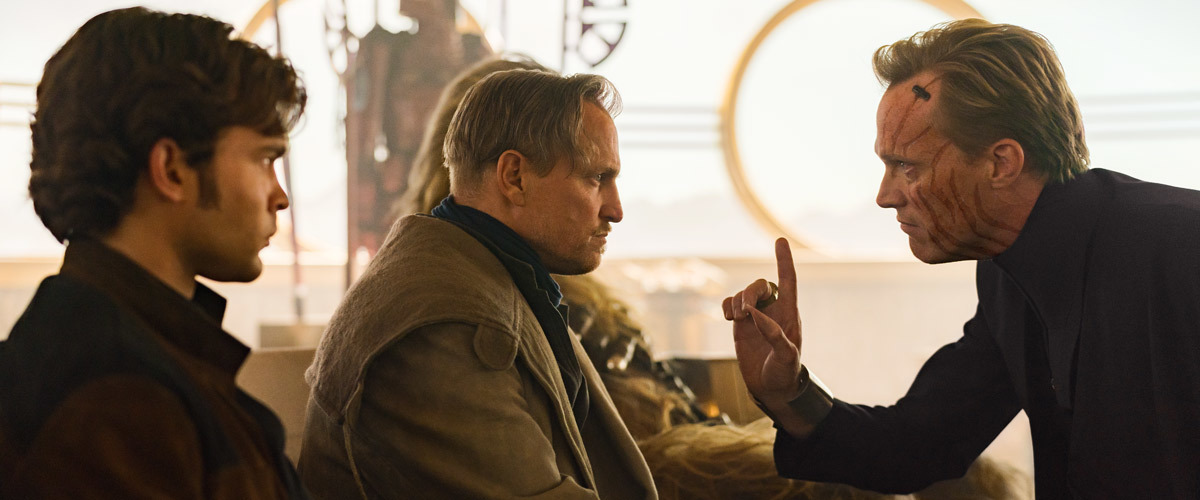
In addition to its “retro setting”, Solo also gives writer the opportunity to explore the criminal element of Star Wars, one of the most exciting yet underused features of the Star Wars original trilogy and expanded universe. Characters like the gangster Jabba The Hutt and bounty hunter Boba Fett were prominent aspects of the original trilogy but the prequel trilogy leaned into the Jedi and Sith instead of the criminal elements present in the original trilogy. The Star Wars Legends material explored the different aspects of the criminal underworld in anthologies like Star Wars: Bounty Hunters and The Han Solo Trilogy, but many casual fans have not delved deeply into the details of the galaxy’s nuanced underbelly.
Many fans who know Han Solo’s “Legends” origins story know that Han’s story is heavily involved with the criminal elements of the galaxy like gangsters, slavers, and smugglers. It’s a background that laid excellent groundwork for writers and designers to pilfer for ideas and themes when creating a new Han Solo film. The criminal elements in Han’s background present a unique opportunity to the writers, actors, and director(s) of Solo. Often, Star Wars is seen as a black and white, good vs. evil universe. This universe is perfect for the more traditional “hero’s journey” narrative that was the basis of the original Star Wars film, but these ideas are less suitable for a story about criminals and gangsters, where the lines of right and wrong are blurred.
Solo: A Star Wars Story presents a much more complicated moral tapestry of the galaxy and the complex power systems beyond imperial and rebel hierarchy. The criminal underworld is one of the elements that “made the [Star Wars] universe feel more viscerally lived-in, with lives that don’t hinge on Jedi-Sith or even Empire-Rebel conflicts” (Hassenger). This key element that fueled iconic moments like the Mos Eisley sequence like scoundrels, bars, gambling, exotic aliens, return with Solo. The mix of “meancing gangsters with decadence” helps Solo develop its own narrative identity, making the film a more unique and distinct film within the Star Wars filmography.
The Best Group of Scoundrels From Across The Galaxy
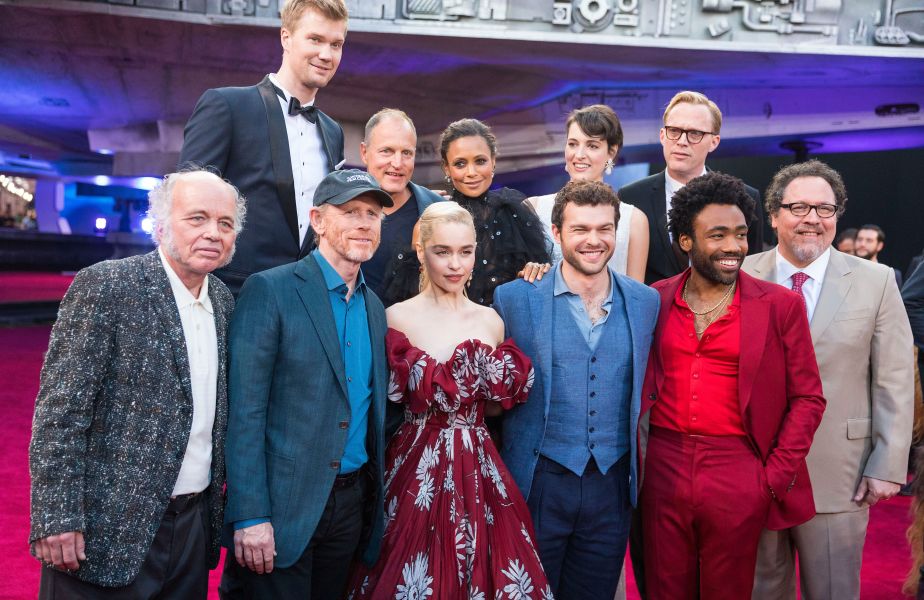
Solo: A Star Wars Story includes an incredible group of actors who have varied and distinct acting backgrounds. Well respected veteran actors like Woody Harrelson, Paul Bettany, and Thandie Newton, who have been in the film industry for years, play significant roles within the film. Younger actors like Alden Ehrenreich, Joonas Suotamo, and Phoebe Waller-Bridge also get a chance to develop their skills around these veterans. Finally bonafide television stars like Donald Glover (also a successful rapper, writer, and producer) and Emilia Clarke round out the cast. One film reviewer for Variety asserted that the films performances beginning with “Alden Ehrenreich as the young Han Solo and extending to the film-stealing Donald Glover as his wily frenemy Lando Calrissian, are consistently entertaining” (Barker).
Recasting Han Solo was a controversial decision that some fans would never accept. Despite the difficulty associated with this process, the decision to cast Alden Ehrenreich turned out to be a positive choice in the eyes of many fans and critics. The young actor reproduced some of the same swagger that many fans and critics fell in love forty years ago. Ehrenreich, who played roles in films like the Coen Brother’s Hail Cesar, struggles throughout the film to shake off comparisons to Harrison Ford but by the end Enrenreich is able to “give the role a satisfying new spin” (Barker). Ehrenreich has spoken public about working to falling into an impression of Ford and he instills his performance with elements of naïvete and vulnerable, which illustrates that while Ehrenreich is playing Han Solo, it is not meant to be the Han Solo that fans have seen in Episodes IV-VII.
Woody Harrelson’s performance as Tobias Beckett is a performance that is especially notable in Star Wars filmography. The actor and writers developed a complicated mentor figure who is sometimes endearing and wise, while illustrating a darker, more ruthlessness side. These traits make Beckett an intentionally different type of mentor figure for the inexperienced Han Solo. In an article for The Hollywood Report, Ciara Wardlow asserts that Harrelson’s character is a departure from the traditional Star Wars mentor because “the ultimate value of the advice he gives Han is debatable” (Wardlow). Beckett’s advice is based on his own murky moral code, a code that is decidedly more complex than the black and white, good versus evil code that is often exposed by mentors like Obi-Wan Kenobi and Yoda. Just as Lucas required a performance from the legendary Sir Alec Guiness to anchor the original Star Wars, Solo requires a impressive performance from its mentor figure to ground the film. Harrelson pulls off a stunning balancing act as Beckett, who moves between the binaries of friend and foe throughout the course of the film. It’s a performance that requires great skill and nuanced to be believable, which Harrelson provides in spades.
Donald Glover is another standout performer in the film. Glover exudes charm as the swashbuckling and charismatic Lando. Several reviewers have asserted that Lando and Glover have outshone and “outswaggered his frenemy Han Solo” (Alexander). It’s incredible performance that illustrates not only Lando’s enduring popularity as well how Glover is currently at the “epicenter of pop culture”. In addition to Lando’s individual screen presence, Lando plays well off the rash and uncultured Han, a sophisticated and worldly foil. The two have several excellent verbal duels throughout the film, which lead to some of the best humor the film. Some fans are already clamoring for a Donald Glover to reprise his role in a film of his own, a sure sign of his incredible performance in Solo: A Star Wars Story.
Exotic Locations
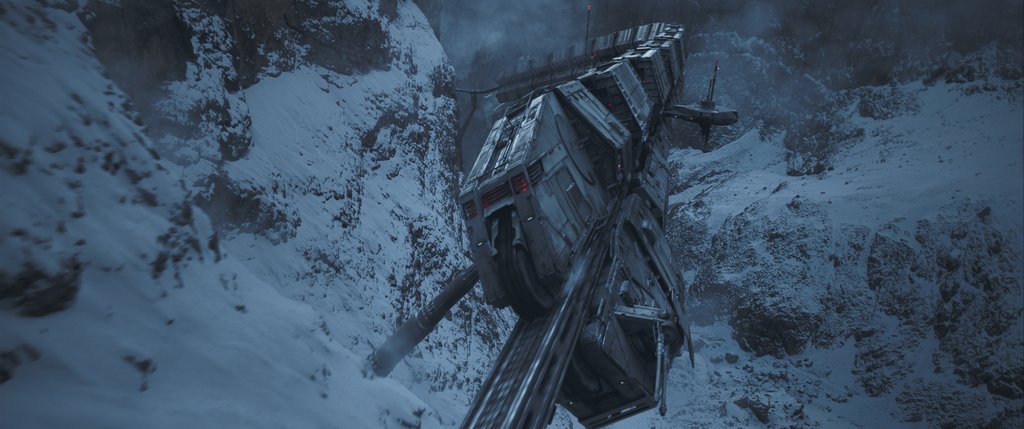
Star Wars is known for its iconic and incredible locations, which help anchor the characters and setting. These places helped fans understand the vastness and exoticism of the galaxy George Lucas and Lucasfilm have been developing for over four decades. Stunning and scenic locations like Tatoine, Bespin, and Endor are huge parts of what made the Star Wars franchise so memorable. Each location needs to feel visually distinct, with their own identifiable characteristics, landscapes, and inhabitants.
Solo introduces its share of spectacular locations throughout the film including the stark, gray shipbuilding world of Corellia. Realized as a grimy, industrialized world, Corellia introduces us to Han Solo and helps the viewer to understand the environments that shaped him. In the Art of Solo: A Star Wars Story, Corellia is explained as a cross between a “Dickensian kind of city” and a “punk rock, seventies, urban-decay New York City”. The Dickensian elements can be seen in the White Rat Gang’s hide out where orphans are used as pickpockets in return to tepid resources and limited protection. In terms of the planet wide scope, the industrial plants and refineries of Corellia are clearly rooted in sprawling urban cities like New York City and Detroit in the 1970s, where working class and poorer areas were ften centers of poverty and blight.
Another crucial location previously mentioned in Star Wars Legends is the spice mines of Kessel. The location is controlled by the Pike Syndicate, which uses brutal violence and slavery to control the area. The designers of Solo: A Star Wars Story looked to “incredible sulfurous poison pools” from areas of Ethiopia for the distinct color and fumes of Kessel (Szostak). The inside of mine embraced a “retro-graphic sensibilities” with 1950s computer screens and other aged elements. These elements develop the viewer impression of an environment in decline, held together by the brutality and slavery instituted by the Pikes. It’s a sprawling location, perfect for a tense heist that is the exciting midpoint of the film.
The climatic location in the film, Savereen, a location where “the desert meets the sea, the end of the continent” (Szostak). The location (Fuerteventura in the Canary Islands) has an incredible contrast in its beautiful beaches and the harsh cliffs and dusty town that oversea the water. It’s a beautiful location reminiscent of “Spaghetti Western films of the 1960s, such as Sergio Leone’s “Dollars Trilogy” starring Clint Eastwood. With these visual connections to cowboy films like The Good, The Bad, and The Ugly and Unforgiven, Savereen is the perfect place for a climatic blaster showdown, where Han reaches the end of his first adventure.
These locations set the stage for a beautifully shot film that jumps from location to location. Much like the original trilogy, much time was spent making the worlds feel lived in and realized. Corellia, Kessel, and Savereen are places with long histories and that is conveyed in the grime, dust, and rust found in these places. Unlike many locations in The Prequel Trilogy that looked high tech like Coruscant and Kamino, the locations in Solo are designed to feel old, and lived in. The outskirts of the galaxy are as wild and unpredictable as the underworld plot Hans finds himself involved in.
Powerful Themes – Servitude, Freedom, and Trust
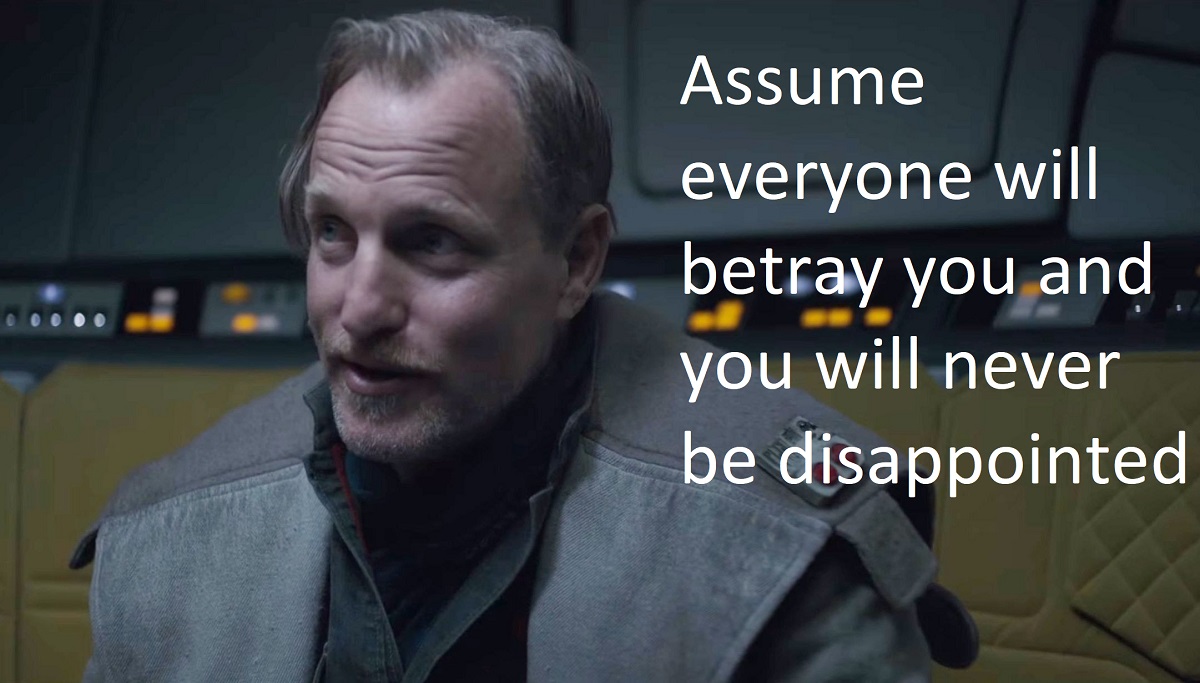
Solo: A Star Wars Story involves some of the most relevant and intimate themes presented in the Star Wars saga. These themes are decidedly different than the other films so far. Star Wars is known for themes like redemption, self sacrifice, and the battle between good and evil. These themes are massive and powerful, but often focus on a wide scale that doesn’t fit Solo: A Star Wars Story well. Instead, the film focuses more personal themes like debt/servitude, freedom, and trust. These themes more suitably fit characters like Han, Qi’ra and Beckett, who struggle to make their own paths in the hostile and dangerous underworld.
Debts and Freedom
Service and debt are a key themes that are introduced in the opening moments of Solo. Han and Qi’ra open the story working as pick pockets and grunts for a low class Corellian gang known as The White Rats. The young lovers desire control over their own lives, yet often find themselves indebted to others. Under the thumb of Lady Promixa the two characters begin to understand the galactic specking order: you are under the control of the people more powerful than you. This power system plays out throughout the film with power and influence being the key to a better life. In an interview for Entertainment Weekly, asserts that most people in the galaxy are “under the control of some kind of force or another”. This dynamic is notably represented by Dryden Vos, whom Qi’ra serves under. Vos manages incredible power, thus he controls those around him and below him.
The theme of debt and service is closely related to the idea of freedom. Freedom is what Han and Qi’ra desperately desire. The young lovers aspire to be people who don’t have to “rely on anybody… or owe anyone” (Entertainment Weekly). This is especially evidence for Han who dreams of “calling his own shots”. Han’s biggest dream, owning his own ship, is a manifestation of his desire to be free. To be able to go where he wants to go, to never be told what to do or when to do it. Throughout the film, it will become clear to Han that having this type of freedom “isn’t something that comes easily”, rather it is something that comes are a great cost (Entertainment Weekly).
In contrast to Han’s fierce resistance to the system, Qi’ra is forced to learn how to better “work the system”. Sold into slavery, Qi’ra is forced to find ways to handle herself in a dangerous and hostile universe, one that presents specific and terrible challenges as young and vulnerable woman, challenges that Han might not face if roles were reversed. Overall, Qi’ra’s experiences forces her to question whether true freedom is actually attainable. Qi’ra seems to learn that regardless of status, a person has to take orders of some form. This is best represented by Qi’ra’s foreboding quote: “Everyone serves someone” (Solo: A Star Wars Story). This quote illustrates a key theme that plays out throughout the film, with Dryden Vos and a surprising cameo supporting Qi’ra’s cynical point of view. While power can be grown and status gained, no one can avoid some type of servitude or debt.
Qi’ra’s perspective, viewing freedom as a result of denial and naivety, rather than being truly attainable, is also illustrated in Tobias Beckett’s arc. In the film, Beckett is constantly working to pay off his debt. The hyper fuel heist early in the film, is a “last heist” to score enough credits to retire. The aging thief constantly brings up his impending retirement on Glee Anselm, where he will finally learn the Valachord, a musical instrument. It’s an arc that is widely familiar to fans of the western Unforgiven, where the aging law man Little Bill (Gene Hackman) unsuccessfully trying to build his own home. Both characters’ arc end with the dreams of retirement and rest obliterated, destroyed by their own choices and by the worlds they have chosen to inhabit. There is symbolic shattering of both characters’ final hopes, as they are unable to break the chains of the systems they are ensnared in.
Trust
The last major theme discussed is trust. In the shadowy world of criminals, trust is in short supply. Becket’s advice to Han is to trust no one. Once Val, Beckett’s companion dies, the older criminal’s cynicism and skepticism become increasingly clear to Han and the audience. Our young hero Han is more trusting, without Becket’s long experience in the underworld. Beckett’s iconic line: “assume everyone will betray and you will never be disappointed” (Solo: A Star Wars Story) illustrates Beckett’s perspective on trust and relying on others. Throughout the film, Becket repeatedly warns Han against trusting, especially Qi’ra, who Beckett views in a completely different way than his young partner. Becket’s prophetic line is planted early in the film, giving the idea of trust time to develop throughout the course of the film’s narrative.
Mirroring Han’s search for freedom is Han’s search for trust. Throughout the film, there are several candidates for Han to consider in this quest. This includes Beckett (the older mentor), Qi’ra (the love interest), and Chewbacca (a reluctant companion). Beckett seems like the ideal candidate, an older, wiser figure, yet Beckett betrays Han, chiding him for his trust in anyone. Qi’ra and Han share an emotional connection from their youth, but much like Beckett, her lack of trust and different beliefs keep her from being a person that can trust or be trusted. However, in Chewie, Han finds a true friend and copilot. Unlike many bonds in the film, where power and experience are unequal, Han and Chewie have a partnership where both characters profit and grow together. In a world where “trust doesn’t come easy” one of the lesson of Solo is that finding a person you can trust and have your back is the one of the most important thing you can do.
A Legacy of Film Inspirations
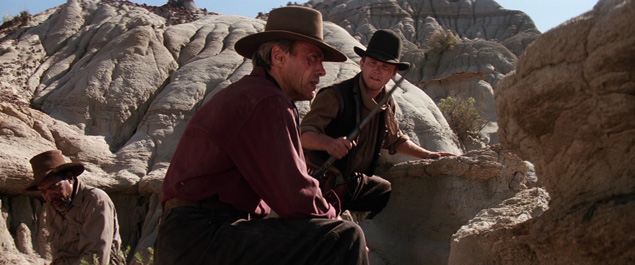
Star Wars saga has a long history of being inspired by and inspiring other film makers. The original Star Wars films were inspired by Flash Gordon serials and films by Akira Kirasowa, some films being large enough influences on Lucas that they helped influence the tone, direction, and plot elements of the trilogy. Similarly the sequence where Anakin murders the former separatists leaders in Revenge of the Sith was inspired by Francis Ford Coppola’s The Godfather, (Coppola is a longtime friend of George Lucas). Much like The Original Trilogy, Solo has its own distinct film inspirations, which have help shaped the film’s tone and identity.
In an Entertainment Weekly article, Howard and the rest of the Solo team highlighted several films that Solo looked to for inspiration. These film included films like Heat, and Unforgiven which focus on men who operate outside the law on the outskirts of society. The relationship between Val Kilmer and Robert Di Nero in Heat, where an experienced criminal is mentoring a younger criminal the rules of their profession, parallels the relationship between Han and Beckett in Solo. This theme is also seen in Unforgiven, where the aging Clint Eastwood acts as a mentor to a young gunslinger known as the Schofield Kid.
Both Unforgiven and Heat examine how criminality and violence affect the mindset of those who are entrenched in these systems. According to screen writer Jon Kasdan, both films involve a “young guy being led astray” into a life criminality and violence (Entertainment Weekly). In these films, crime and violence are diametrically seen as an escape from the traditional laws, as well as its own system of confinements. Similarly, Han looks outside of “conventional” systems like government to make his life as a smuggler and criminal, yet Han also becomes entrenched in the underworld’s unique own code and brands of justice.
Additionally, elements of Cowboy films can be seen in the final showdown on Savereen, including a classic western duel straight out of High Noon and other classic Western. It’s an incredible homage to the western genre, as Han is as an iconic hero as Gary Cooper or Clint Eastwood. This mixing of genres has been an essential part of ’s DNA since its inception. Since the first films, Lucas and others have looked to other films as influence and inspiration, A Star Wars Story intelligently follows this tradition.
Part III – Addressing Criticisms
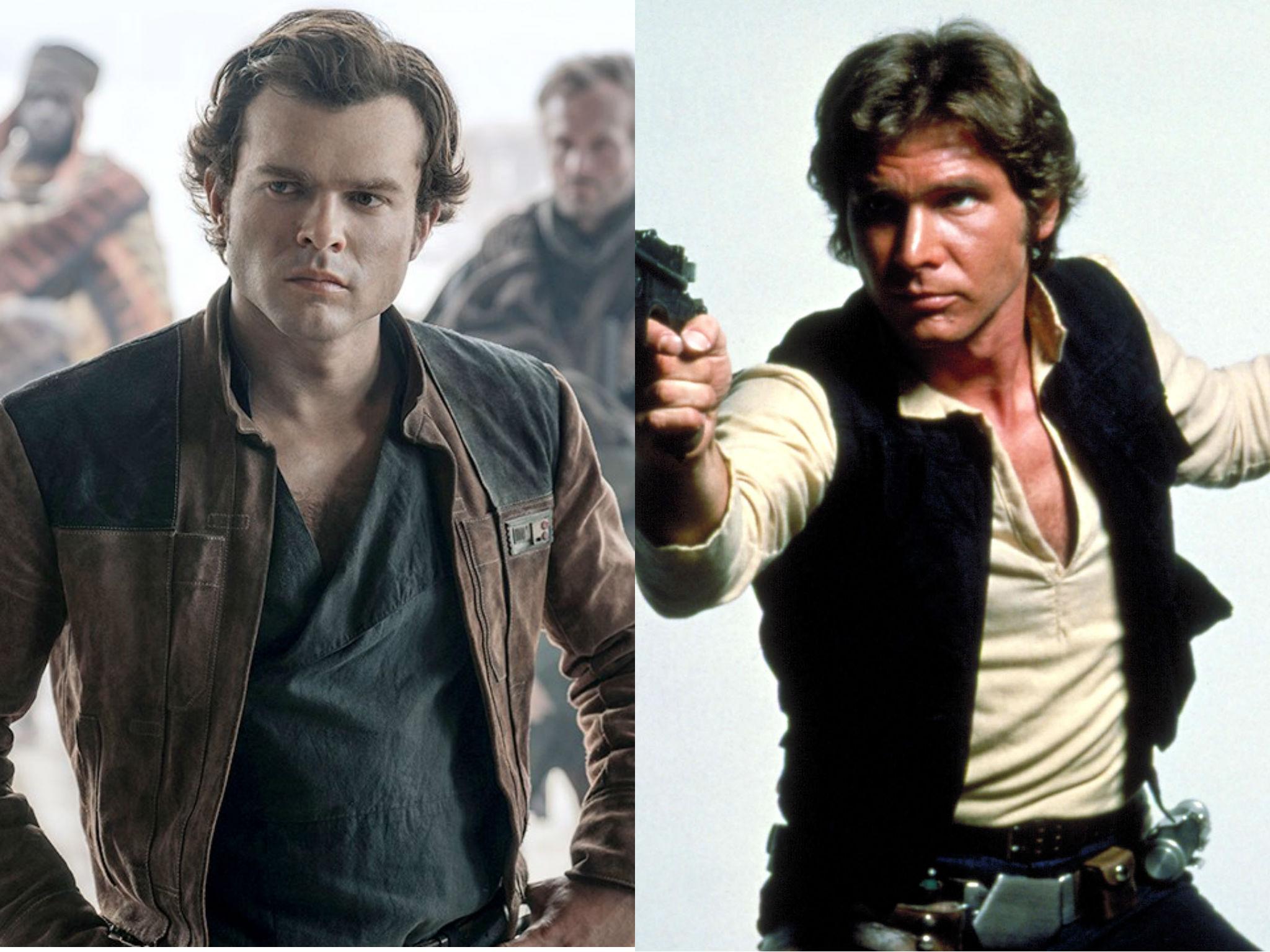
The Film Is Not Essential/Didn’t Need To Be Made
Solo: A Star Wars Story has been widely criticized for asking “questions most viewers probably never thought to ask about Ford’s mercurial hero” (Sims). It’s a criticism that is at times both clearly valid and besides the point. While it is true that the general public never thought much about Han’s backstory or history, it is a topic fans have wondered over and explored for years through the Han Solo Trilogy and other “Legends” material. There was, and still is, a group of fans and film makers who are interested in the story of Han Solo and Chewbacca, answering the question “Just did how Han and Chewie meet?” (Szostak). The film was one of the most requested side stories and most heavily speculated spin off when discussing the Disney purchase of Lucasfilm.
Additionally, Solo and Rogue One are both labeled as A Star Wars Story, a brand that was clearly meant to illustrate its separation from the main “story” or Episodes. By definition, these one off films were meant to appeal to a different group of fans and audience. These films are designed to fill in gaps and explores areas of time outside of the main Star Wars “Skywalker” saga. Film executives, fans, and critics should not expect these stand alone films to appeal to the general public who watched the Star Wars Episodes every few years. These films were never meant to be essential to the plot of the larger overall Star Wars.
Rogue One, the first Star Wars Story also had clear advantages over its anthology follow up Solo. First, the film benefited from the enormous global spotlight and out pouring of praise that Episode 7 generated, which lead directly into Rogue One‘s release. The Force Awakens revitalized the global frenzy surrounding all things Star Wars, just as Phantom Menace had two decades earlier. Additionally, Rogue One received magnified interest since it was the first of a new style of Star Wars films, the side story. With this in mind, it would be interesting to see how Solo would have performed if it had been released a year after The Force Awakens, which featured a crucial moment for Han Solo, rather than being shuffled down the released schedule due to delays and turmoil.
Star Wars Fatigue
For years, Star Wars was considered untouchable at the box office. Looking back at George Lucas’s Star Wars films illustrates a stunning level of success, with all but one Star War film being the “highest-grossing movie the year it came out ” (Sims) and the lone exception (Attack of the Clones) being in the top three for its year. This trend has continued for the first three Disney Star Wars films, with The Force Awakens, Rogue One, and The Last Jedi each being widely successful, with The Force Awakens making more than 1.5 billion dollars globally, an illustration of the enduring interest the the Star Wars saga.
The key difference between Disney’s new films and George Lucas is that in both the original trilogy and prequel trilogy, the films released almost exactly three years apart from each other. For example the original trilogy films were released in 1977 (Star Wars), 1980 (The Empire Strikes Back), and 1983 (Return of the Jedi) respectively. In contrast, the first four Disney Star Wars were released in a three and a half year period. This is unprecedented speed of release and its asks much more of the general audience. This trend requires the audience to buy a ticket for Star Wars every year rather than every three years. The intense release schedule damaged Solo’s chance at becoming a box office success. The film was the unfortunate film to be featured as the fourth film in just three in a half years. In an article for the Atlantic, David Sims asserted that biggest issue facing the film was that “The Last Jedi came out five months ago”. Disney’s model of releasing a film every year ultimately had consequences for its latest Star Wars film.
Additionally, sources revealed that Disney did Solo no favors, as it refused to give the film priority marketing after Avengers: Infinity War, nor would it allow Lucasfilm to move the film to December. The Disney’s refusal to move the Star Wars film was a result of the studio unwilling to risk cannibalizing the box office numbers of its other December release, Mary Poppin’s Returns (Agar). The conversations between Disney and Lucasfilm illustrated that Lucasfilm may have felt uneasy about the timing or wanted to capitalize on the more secure December slot, which Star Wars has basically monopolized since returning to screens. With the brand popularity of Star Wars, it is unlikely that other studios would have felt comfortable or confident competing against the cinematic juggernaut.
The Performance Doesn’t Match Harrison Ford’s Original
No one could live up to Harrison Ford’s performance in the original Han Solo and Indiana Jones films. In the decades since these films, Ford’s performances have emerged as an enduring and iconic performances, with an cultural impact that may be impossible to duplicate. Many fans gave Alden Ehrenreich an impossible task to manage.
Some fans wanted Alden Ehrenreich to do little more than than a Harrison Ford impressionability while others scorned this concept, wanting a completely fresh and new take on the character. Alden’s performance managed to stand in the middle of these two extremes, with some familiarity and some distinct elements for his version of Han Solo. This has caused both camps to criticize the performance to different degrees. For many, it was too similar, for others too different.
Skeptical fans and critics need to understand the tremendous and often oversized expectations they set up for the young actor. Alden Ehrenreich is playing a younger version of Han, one who has years of life before he becomes the beloved scoundrel that met Luke and Obi-Wan in Mos Eisley. Additionally, it’s unfair to ask an actor to simply regurgitate the work done by a previous actor. With this in mind, Alden Ehrenreich does a serviceable job balancing the old and the new. This version of Han is younger, more wide eyed than anther version before him, dreaming of and discovering the galaxy for the first time.
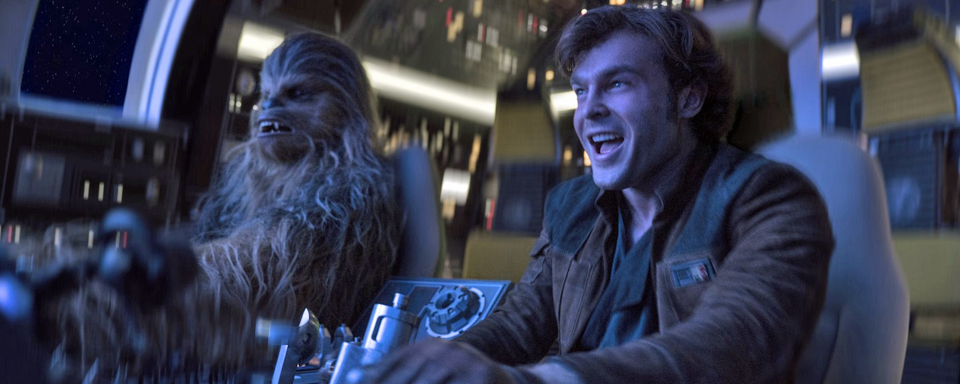
Solo isn’t a perfect film by any means. But it does an excellent job of giving the audience a sense of adventure. Much like Indiana Jones, the film feels like a roller coaster ride from one epic location to the next, barely letting you catch your breath. It’s a fun, action packed romp full of excellent performances, incredible locations, remarkably serious themes, and a legion of film influences. These are the reasons why I think Solo: A Star War an exciting entry in the Star Wars franchise, as well some critical insights into reasons for its bumpy reception and box office receipts.
Works Cited
Agar, Chris. “Disney Rejected Lucasfilm’s Plan To Delay Solo To December 2018.” Screen Rant, Screen Rant, 20 June 2018, screenrant.com/solo-movie-release-date-december-disney-lucasfilm/.
Alexander, Bryan. “How Donald Glover and Lando Calrissian Hijacked ‘Solo: A Star Wars Story’ from Han Solo.” USA Today, Gannett Satellite Information Network, 29 May 2018, www.usatoday.com/story/life/movies/2018/05/21/donald-glover-lando-calrissian-stole-solo-star-wars-story/617699002/.
Barker, Andrew. “Film Review: ‘Solo: A Star Wars Story’.” Variety, Variety, 15 May 2018, variety.com/2018/film/reviews/solo-a-star-wars-story-review-alden-ehrenreich-1202811559/.
Entertainment Weekly. “The Ultimate Guide To Han Solo: Inside The New Movie Solo: A Star Wars Story“. May 2018.
Harris, Hunter. “Why Were Lord and Miller Fired From Star Wars’ Han Solo Movie?” Vulture, 26 June 2017, www.vulture.com/2017/06/phil-lord-chris-miller-star-wars-han-solo-movie-fired-reason.html.
Hassenger, Jesse. “Solo Marks Star Wars’ Return to Sleaze.” The Week, 24 May 2018, theweek.com/articles/773582/solo-marks-star-wars-return-sleaze.
Kain, Erik. “The 5 Biggest Problems With ‘Star Wars: Rogue One’.” Forbes, Forbes Magazine, 17 Dec. 2016, www.forbes.com/sites/erikkain/2016/12/17/the-5-biggest-problems-with-star-wars-rogue-one/#2e4296646654.
Rubin, Rebecca. “’Solo’: How Big a Box Office Dud Is the ‘Star Wars’ Spinoff?” Variety, Variety, 31 May 2018, variety.com/2018/film/news/solo-a-star-wars-story-box-office-losses-1202825432/.
Solo: A Star Wars Story. Directed by Ron Howard. Disney/Lucasfilm, 2017.
Phil, Szostak. The Art of Solo: A Star Wars Story. Abrams Books, 2018. Print.
Sims, David. “With ‘Solo,’ Has ‘Star Wars’ Fatigue Set In?” The Atlantic, Atlantic Media Company, 29 May 2018, www.theatlantic.com/entertainment/archive/2018/05/with-solo-has-star-wars-fatigue-set-in/561416/.
Wardlow, Ciara. “Woody Harrelson Is Not the Typical ‘Star Wars’ Mentor.” The Hollywood Reporter, The Hollywood Reporter, 8 Sept. 2018, www.hollywoodreporter.com/heat-vision/solo-woody-harrelson-is-not-typical-star-wars-mentor-1114360.
What do you think? Leave a comment.











Saw the movie, and it was quite enjoyable. Not the greatest film I’ve ever seen, but it’s a Star Wars film and scratches my nostalgic belly in a fashion that I find pleasing. I’ve never ascribed much meaning to critics as they rarely involve themselves in film production, and are just not the sort of people I like to associate with. Life’s too short to go looking for dark clouds, and bitching about other’s work is the lowest form of writing.
criticism is consumer advocacy. if a product is bad, people have a right to know. and a director like ooooh say Rian Johnson should be professional enough to take it on the chin.
My biggest complaint about this film which I haven’t seen is that they didn’t cast me as Han solo. Unforgivable.
After all the negative publicity I enjoyed this movie a lot. Not as good as Rogue One though Infinitely better than the Last Jedi and Force Awakens.
Alden Ehrenreich had an impossible task and did a good job filling Fords shoes. Emilia Clarke was disappointing and Paul Bethany should have been in it more. Was hoping he’d put on the Mandalorian armour and start kicking some butt at the end which seemed a bit flat compared to the rest of the film.
The film managed to impart humour far more successful than the embarrassment that was Last Jedi.
I just saw it and enjoyed it immensely. A fun caper movie with unexpectedly good star turns. And who wouldn’t love Glover’s Lando?
I await people telling me I’m wrong and all the reasons I shouldn’t have enjoyed it, though. That’s always fun.
Fair enough. You like what you like and I like what I like. I might even, if I do go (unlikely as that is), like Solo. Again, as I have noted elsewhere, my objection is that the SW franchise dominates popular perceptions of the SF genre and the fanboy/girl types get the rest of us a bad name. I’m glad you enjoyed the film. I hope you enjoy many more.
Some fanboy hatred coming my way for saying this, but the Stars Wars franchise is, and always has been, SF for people who don’t know anything about SF. At its best it’s capable space opera (but no Dune);* at its worst, it’s…. Ewoks – alien teddy bears essentially created as a marketing tie-in and Jar-Jar Binks- me no say no more. Comedy in that one strong is not, as the best creation in the entire series might put it.
Not hatred, but perspective.
Star Wars is what inspired me to read science fiction. I’d had almost no exposure to it outside of animated fantasy kid’s cartoons. One of the best things about legacy science fantasy is that it creates a bridge between genres in speculative fiction.
As for Ewoks, they were meant to be half-sized Wookiees, cut down in size to stay within the movie’s budget. (That was a thing good directors did back then.) The portrayal of the characters was far superior to the plot distraction that’s Jar Jar Binks.
Finally… you chose this post to complain about SW as a whole? Is this a response to the “Star Wars Fatigue” section or have you not figured out where wild shots against a fandom are actually appropriate?
In response to your comment, it’s important to note that Star Wars has always had strong influences and drawn deeply from various mythological traditions (acknowledge often by creator George Lucas) so viewing or assessing it as pure science fiction will not reveal the full picture for the franchise.
Additionally, any fan should be able to acknowledge/handle criticism of the films, I will be the first to acknowledge that there are plenty of mistakes in the series long history, which you can also find in many other long lasting universe/stories. Thank you for the comment.
GREEEEEAT analysis. I think Solo is the closest any modern Star Wars film has come to capturing the charm of the originals and I think a large part of the reason why is because of that “low-stakes” story. I’m browbeat by EPIC tales and the subtlety makes for a nice change. Rogue One was exhausting and had Edward Scissorhands for an editor, Force Awakens was enjoyable but almost too safe but The Last Jedi then slipped right into the realm of the painfuly comfortable, so perfunctory and predictable that watching it felt like cleaning my teeth.
Indeed, some of my favourite films are “low stakes”, the Dredd remake for instance, or Shawshank.
Saw Han Solo with my wife and two kids this afternoon – shock horror we all loved it. Alright it’s not going to win any Oscars, but it’s an enjoyable romp through the Star Wars universe and a great extension to the series. I really like the idea of the spin offs and why not? The more Star Wars films the better.
I thought Alden Ehrenreich pulled off an impossible task really well and the Chewie scenes were just awesome. It’s great ENTERTAINMENT people, relax and take another dip into a long time ago in a galaxy far, far away.
I guess haters have to hate, even when they are plainly hating just for the sake of it. Get over yourselves.
Enjoy a damn good couple of hours of entertainment.
Since the film where the real Hans Solo died, which was amazingly pretty good, it’s been nowt but flogging a bloody dead horse. Come up with something original for Christ’s sake.
wait, you’re complaining about the films not being original SINCE the Force Awakens – which was basically a rehash of every major scene in the original films..? behave. although I enjoyed it too.
I actually really enjoyed it, it was leagues better than The Last Jedi.
Most of the complaints I’ve read are that Ehrenreich isn’t Harrison Ford. Well, duh? Short of going back in time there’s not a lot you can do about that, and I think that Ehrenreich does a fine job of portraying the cocky smuggler in his formative years.
After all the struggles to make this film, I’d have hoped critics could be a little more supportive.
Then again, most of these critics have zero clue how difficult it is to produce anything more taxing than a two paragraph review. So thank you for this analysis.
most people are interested in the end result.
If you think the critic’s role is to be “supportive” and to take into account the production history into account when assessing the finished product, then it’s no wonder you sound so confused
Struggles? Ask Terry Gilliam or Orson Welles about struggling to complete a film.
Actually I found it reasonably entertaining especially after the rumours of being a total train wreck.
The sets, costumes and environment felt Star Wars.
Not sure about Lando’s droid or Kira but overall it was fun and felt less of a mess than Last Jedi.
I think that was the point of the huge damage control and setting peoples expectations at rock bottom, a dull pointless movie becomes ‘reasonably entertaining’ and ‘fun’ where a Star Wars movie should be rated much higher than that.
I think the problem is that the yearly cash in schedule is defined long in advance of any scripts or planning of the content of the movies. All the Disney Star Wars films have been botch jobs rushed to meet a schedule rather than having an epic story to be told when the time is right for it.
As an audience member and Fan of Star Wars, I have huge amounts of ingrained empathy for all things Star Wars.
My main complaint and devaluation of the great film that was Rogue One was that it was a video game walkthrough albeit within the Star Wars Universe, and it was quite straight forward within the over arching war movie styled narrative, though failed for myself in the immediacy of “Do I want to see this again” repeat viewing stakes.
Solo of course features Han & Chewie and Lando and The Falcon and that comes with various expectations, none of those central characters could essentially die or come to any great harm.
My main complaint with regard to Solo, is the one of to many continuity gaps (events years apart) & condensed plots, a strong everlasting romance between two central characters only really works if you feel that spark etc. and it simply did not happen,. For me they may as well as have gotten Jack Black to play Han Solo as that was closer to what this performance was, (yes the actor was actually okay though always felt like the weakest link in the presence of most of the rest of the cast), perhaps a deliberate psychology given the no-win comparison scenario.
Woody Harrelson’s crew were great, as was the main criminal, and indeed Mr Glovers Lando and robot sidekick and Chewie really shined through, though again later on within the movie we were expected to have a sudden great empathy for some previously titled bit part Masked Marauders when the masks came off, and so on.
As a fan of Star Wars and as a fan of movies that aren’t utterly deleted by their own self-aggrandising story-bloat, I thoroughly enjoyed this film and was reminded how and why I disliked the New Numeral movies. The dialogue was occasionally clunky (first scene with Han and Qi’ra was dire) and the pacing was occasionally off (especially in the final 1/4), but I didn’t mind because at the core of this movie was action that carried the narrative in a smooth and enjoyable way that for me was the epitome of taking one’s audience along for the ride.
The ridiculous situations that repeatedly dropped the characters in the proverbial rancor pit made sense within the world. The things the character said and did characters made sense – clunky dialogue or not – and while we may have known the eventual outcome of the events that took place at least we weren’t watching beat-by-beat reconstructions of events already seen in previous films (Death Star destruction, battle of Hoth 2.0 with red bits of dirt etc). The sequences were exciting, surprising, perilous and character driven.
Neither eps VII or VIII achieved these things. At all. I’m thinking of Skywalker being a totally different person in Last Jedi, Admirals that won’t take 10 seconds to explain their plan because the next 45 mins of film are predicated on it. I’m thinking of a ponderous 45 min ‘chase scene’ with space ships making no meaningful attempt to resolve their impasse because the movie needed a slow lump in the middle. Mythos be damned, if you can’t make the movie work within the scope of the franchise then why make it a Star Wars movie at all?
Hooray for the spin-off movies, they are carrying Star Wars now.
Saw this movie last night and enjoyed it so much more than The Last Jedi. It was fun, the characters were engaging and the story was easy to follow with lots of twists and turns. There were some good laugh out loud moments too. I’ll probably see it again soon.
Saw this at the cinema with my daughter then we watched The Last Jedi at home yesterday (we didn’t bother seeing it at the cinema as we both disliked TFA).
Solo was quite dull and far too long. Seemed to be just a check list of things they had to do to fill the back story. Emilia Clarke was terrible. She can’t act. She is about the only one in GoT that can’t act but because of the role gets away with it (she has dragons!)
The Last Jedi surprised me. Was expecting to hate it but actually quite enjoyed it. Plot holes larger than super massive black holes though.
I think you’re in the minority, but don’t worry. Quirks like yourself make the world an interesting place 😉
It just seems like a wasted opportunity; like every film in the new series. Star Wars has glorious settings and characters, Disney has a load of money and Hollywood is brimming with talent. Yet, this is what we get?
It’s a great Star Wars film.
The entire point of the film is that it’s a standalone(ish) romp without the mythology of the main sage.
Saw it recently with my son. He loved it, which is the point of films like star wars. I’m not into star wars, but my son is obsessed, and I’ve started to look forward to a new film coming out as it means we can share another positive memory together. Emelia Clarke is an awful actress though , if it wasnt for game of thrones she wouldn’t be in as many prominent films as she has been. Aside from that, it was an enjoyable, fun movie that was far better than I thought it would be
Totally agree.
I think he captured the essence of the character rather well. It was a thoroughly enjoyable movie.
I thought this was a fun Star Wars movie. Without any force-sensitive characters, you still know and feel you’re in the Star Wars galaxy.
I agree that this film has taken a lot of negative press. Imo unjustly so. The charcters and performances far exceed other chapters in the star war universe. I fear now we are in a star wars fatigue arena where, like buses, too many arrive at once.
I’ve just watched it and I enjoyed it, well paced and funny. My 10 yr old son also seemed to enjoy it.
Still got to watch it (:
I thought it was very enjoyable – a bit far fetched in places but it’s Star Wars.
Firstly, I really enjoyed Solo. Secondly, movies should be appreciated in the here and now; and (though these topics have interest in their own right) we oughtn’t to be too pre-occupied by studio profits, how the actors were selected/directed, etc.. Thirdly, while taking place in a galaxy and time far from our own, Star Wars IV and its other episodes are, for the most part, much more like “The Adventures of Robin Hood” (just exchange swords ro light-sabers) than any real science fiction: Good and bad are drawn so starkly that there is no ambiguity and our heroes execute amazing and improbable feats of daring-do.
Hi Mr. Gadus
sorry Mr. Gadus didn’t mean to scare you
A really interesting discussion.
But, sorry nope just can’t do it.
An enjoyable essay to read and I even enjoyed the movie.
It definitely feels like to me that there were some huge gaps in the storytelling due to the extensive reshoots (Seriously, what was up with the reveal of Enfys Nest? Was she intended to be Beckett and Val’s daughter in the original storyline?).
Also felt like the whole droid uprising was played for laughs to an uncomfortable extent, where it felt like a jab at “social justice warrior” types. Overall, super disjointed in terms of how it fits into the wider mythos and feels underdeveloped.
For me, the character of Han Solo worked because he was a mystery. Before the movie came out all we knew was that he did all these great feats, MAYBE. In universe, the characters don’t seem to know if or how they actually happened and Han sure isn’t telling. Why? Because he knows these tall tales serve him as a smuggler and gives him a reputation. It also serves the same purpose for the audience. By not knowing the exact details, we can’t help but imagine what really went down, which in turn further fuels the legend. But having it spelled out for us, it ruins this. “Oh, that’s how he got his name; oh, that’s how he got the Falcon; oh, that’s what the Kessel Run was; etc.” The mystery is just gone now and unfortunately the truth was kind of just mediocre.
You’re right, and I’m glad you said it.
Solo would’ve been such a great tv series. Killing off Thandie Newton’s character was such a bummer.
Maybe if this film had been released later than it was it may have found greater success.